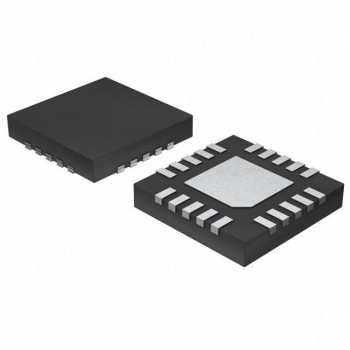In today's highly interconnected world, electronic devices are becoming increasingly prevalent in our daily lives. From smartphones and laptops to smart home appliances and wearable technology, these devices rely on delicate electronic components to function properly. However, these components are susceptible to damage from electrostatic discharge (ESD), which can occur when two objects with different electric potentials come into contact with each other. To prevent this damage, manufacturers implement various protection measures, with ESD protection and Human Body Model (HBM) protection being two of the most common methods. In this article, we will explore the differences between ESD protection and HBM protection and discuss their respective advantages and limitations.

ESD Protection:
ESD protection is a crucial component of electronic device design, as it helps to safeguard sensitive components from damage caused by electrostatic discharge events. ESD protection devices are typically integrated into the circuitry of electronic devices and are designed to divert the excess electrical charge away from the sensitive components, thereby preventing damage. There are several types of ESD protection devices available, including transient voltage suppressors (TVS), diodes, and capacitors, each of which serves a specific function in protecting against ESD events.
One of the key advantages of ESD protection is its ability to provide robust protection against a wide range of ESD events, including direct discharge events and indirect discharge events. ESD protection devices are designed to respond quickly to ESD events, diverting the excess charge away from sensitive components before any damage can occur. Additionally, ESD protection devices are typically low-cost and easy to integrate into electronic device designs, making them a cost-effective solution for protecting against ESD events.
However, ESD protection devices do have some limitations. For example, ESD protection devices are typically designed to protect against specific types of ESD events and may not be effective against all types of ESD events. Additionally, ESD protection devices can be susceptible to damage themselves in the event of a severe ESD event, which may compromise their ability to protect against future ESD events. As a result, it is important for manufacturers to carefully select and integrate ESD protection devices into their electronic device designs to ensure effective protection against ESD events.
HBM Protection:
HBM protection is another common method used to protect electronic devices from damage caused by electrostatic discharge events. HBM protection is specifically designed to protect against ESD events that occur when a person comes into contact with an electronic device. HBM protection devices are typically integrated into the circuitry of electronic devices and are designed to divert the excess electrical charge away from the sensitive components, thereby preventing damage.
One of the key advantages of HBM protection is its ability to provide targeted protection against ESD events that occur when a person comes into contact with an electronic device. HBM protection devices are designed to respond quickly to ESD events, diverting the excess charge away from sensitive components before any damage can occur. Additionally, HBM protection devices are typically low-cost and easy to integrate into electronic device designs, making them a cost-effective solution for protecting against ESD events that occur when a person comes into contact with an electronic device.
However, HBM protection devices also have some limitations. For example, HBM protection devices are typically designed to protect against ESD events that occur when a person comes into contact with an electronic device and may not be effective against other types of ESD events. Additionally, HBM protection devices can be susceptible to damage themselves in the event of a severe ESD event, which may compromise their ability to protect against future ESD events. As a result, it is important for manufacturers to carefully select and integrate HBM protection devices into their electronic device designs to ensure effective protection against ESD events that occur when a person comes into contact with an electronic device.
Conclusion:
In conclusion, ESD protection and HBM protection are two common methods used to protect electronic devices from damage caused by electrostatic discharge events. While both methods serve a similar purpose, they have distinct differences in terms of their target applications, advantages, and limitations. ESD protection is designed to provide robust protection against a wide range of ESD events, while HBM protection is specifically designed to protect against ESD events that occur when a person comes into contact with an electronic device. By understanding the differences between ESD protection and HBM protection, manufacturers can make informed decisions when selecting and integrating protection measures into their electronic device designs to ensure effective protection against ESD events.

